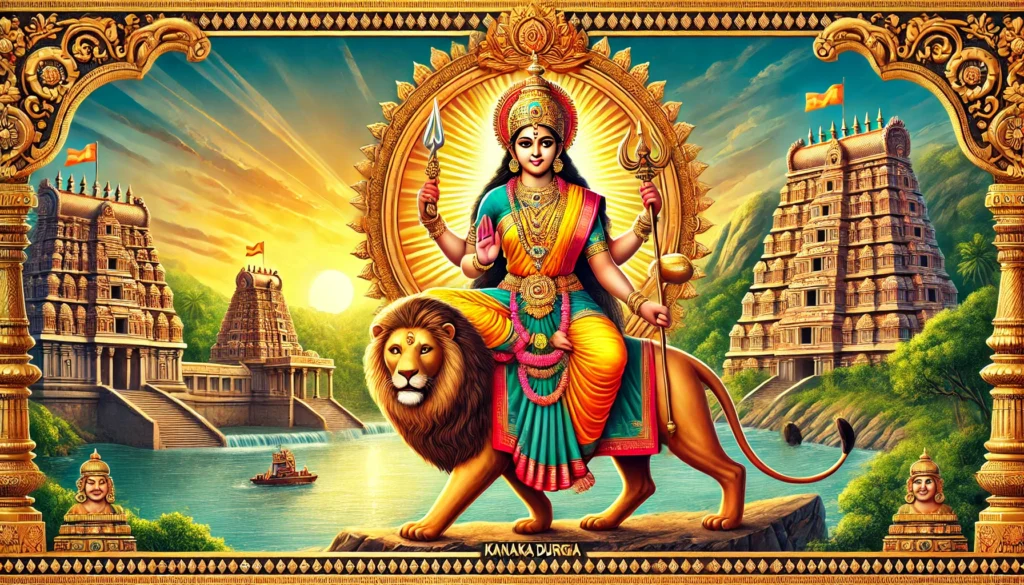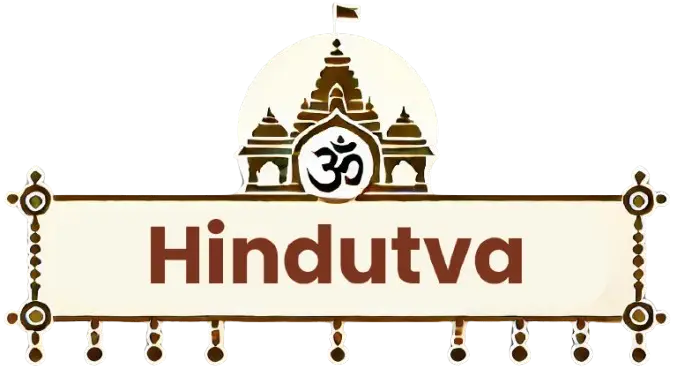Discover the legend of Kanaka Durga, the warrior goddess of Vijayawada, her sacred temple on Indrakeeladri Hill, and the cultural significance of Navaratri celebrations. Explore her teachings on strength, devotion, and resilience
Nestled on the banks of the Krishna River in the vibrant city of Vijayawada, Andhra Pradesh, stands the Kanaka Durga Temple, dedicated to Goddess Kanaka Durga, a form of Goddess Durga known for her benevolence and strength. Perched atop Indrakeeladri Hill, this ancient temple is not just a significant religious site but also a cultural and historical marvel that attracts millions of devotees and visitors each year.

As someone who grew up in Andhra Pradesh, the name Kanaka Durga holds a special place in my heart. I remember visiting the temple with my family during Dasara, witnessing the grandeur of the celebrations and feeling a deep spiritual connection with the deity. This article aims to explore the multifaceted aspects of Kanaka Durga, from her mythology to her temple’s significance and the lessons she offers to modern devotees.
The Mythological Origins of Kanaka Durga
The story of Kanaka Durga is deeply rooted in Hindu mythology, showcasing her role as the protector of righteousness and destroyer of evil. According to the Durga Saptashati, Kanaka Durga is an incarnation of Adi Parashakti, who descended to vanquish the demon Mahishasura. However, the unique legend tied to Vijayawada’s Indrakeeladri Hill adds an intriguing local flavor to her narrative.
The Legend of Indrakeeladri
According to local folklore, Keeludu, a Yaksha (demigod), meditated on Lord Shiva for years, seeking a boon to make his hill an abode of Goddess Durga. Pleased with his devotion, Shiva granted his wish, and the hill was named Indrakeeladri. Kanaka Durga manifested on the hill to protect her devotees and vanquish demons who tormented the region. This tale emphasizes her protective nature and her connection to the sacred hill.
To explore more about Kanaka Durga’s mythology.
The Architectural Splendor of Kanaka Durga Temple
The Kanaka Durga Temple is a fine example of Dravidian architecture, characterized by its towering gopurams (gateway towers), intricate carvings, and vibrant sculptures. The temple, believed to have been built during the Krishnadevaraya period, has undergone several renovations over centuries, blending ancient traditions with modern functionality.
Key Features of the Temple
- Gopurams: The temple’s towering gopurams are adorned with colorful depictions of Hindu gods and goddesses, showcasing the artistic mastery of ancient sculptors.
- Sanctum Sanctorum: The main shrine houses a resplendent idol of Kanaka Durga, draped in gold ornaments and silk, exuding divine energy.
- The Path to Devotion: Devotees can reach the temple either by climbing a flight of Kanaka Durga Steps or via a ropeway, both offering panoramic views of the Krishna River and Vijayawada city.
For those interested in temple architecture, learn more about Dravidian styles at this guide on Indian temples.
The Spiritual Significance of Kanaka Durga Temple
The Kanaka Durga Temple is more than just a place of worship; it is a spiritual haven where devotees seek blessings for courage, prosperity, and well-being. The temple is especially popular during Navaratri, when the deity is adorned in various forms, representing her nine avatars (Navadurga).
Navaratri Celebrations
Navaratri is the most significant festival celebrated at the Kanaka Durga Temple. Each day of the nine-day festival sees the goddess in a different form, from Bala Tripurasundari to Mahishasura Mardini. The temple becomes a hub of devotion, with lakhs of devotees participating in the rituals.
For more details on Navaratri rituals, visit Hindutva Online.
Personal Reflections: My Experience at Kanaka Durga Temple
One of my most memorable visits to the Kanaka Durga Temple was during a family trip in my teenage years. Climbing the steps of Indrakeeladri was not just a physical journey but also a spiritual one. The view of the Krishna River from the temple was breathtaking, and the serene atmosphere made it a truly divine experience. I remember my grandmother telling me how Kanaka Durga protects her devotees, and that sense of safety and solace has stayed with me ever since.
Lessons from Kanaka Durga’s Story
Kanaka Durga’s story offers profound lessons that resonate deeply in today’s world:
- Resilience and Strength
Just as she defeated powerful demons, her tale inspires us to confront challenges in life with courage and determination. - Faith and Devotion
The unwavering devotion of Keeludu reminds us of the transformative power of faith and persistence. - Balance and Prosperity
As a goddess of wealth and strength, Kanaka Durga teaches the importance of balancing material success with spiritual growth.
Modern Relevance of Kanaka Durga’s Teachings
In a world filled with uncertainty, the teachings of Kanaka Durga are a beacon of hope and strength. Her role as a protector and guide reminds us to stay resilient and grounded, even in the face of adversity. Whether you’re battling personal challenges or seeking spiritual clarity, Kanaka Durga’s story offers timeless wisdom.
Kanaka Durga, a Timeless Protector
Kanaka Durga, the deity of Vijayawada’s sacred hill, is more than a figure of worship. She represents the strength within us, the faith that binds us, and the prosperity we seek. Her temple, a blend of history and divinity, continues to inspire millions who climb the steps of Indrakeeladri seeking her blessings.
Visiting Kanaka Durga Temple is not just a religious experience but a journey into the heart of Indian culture, spirituality, and resilience. Whether you are a devotee or a curious traveler, the temple’s aura will leave an indelible mark on your soul.
Author:
Priya Sharma – Political Analyst & Social Commentator
Email: [email protected]

